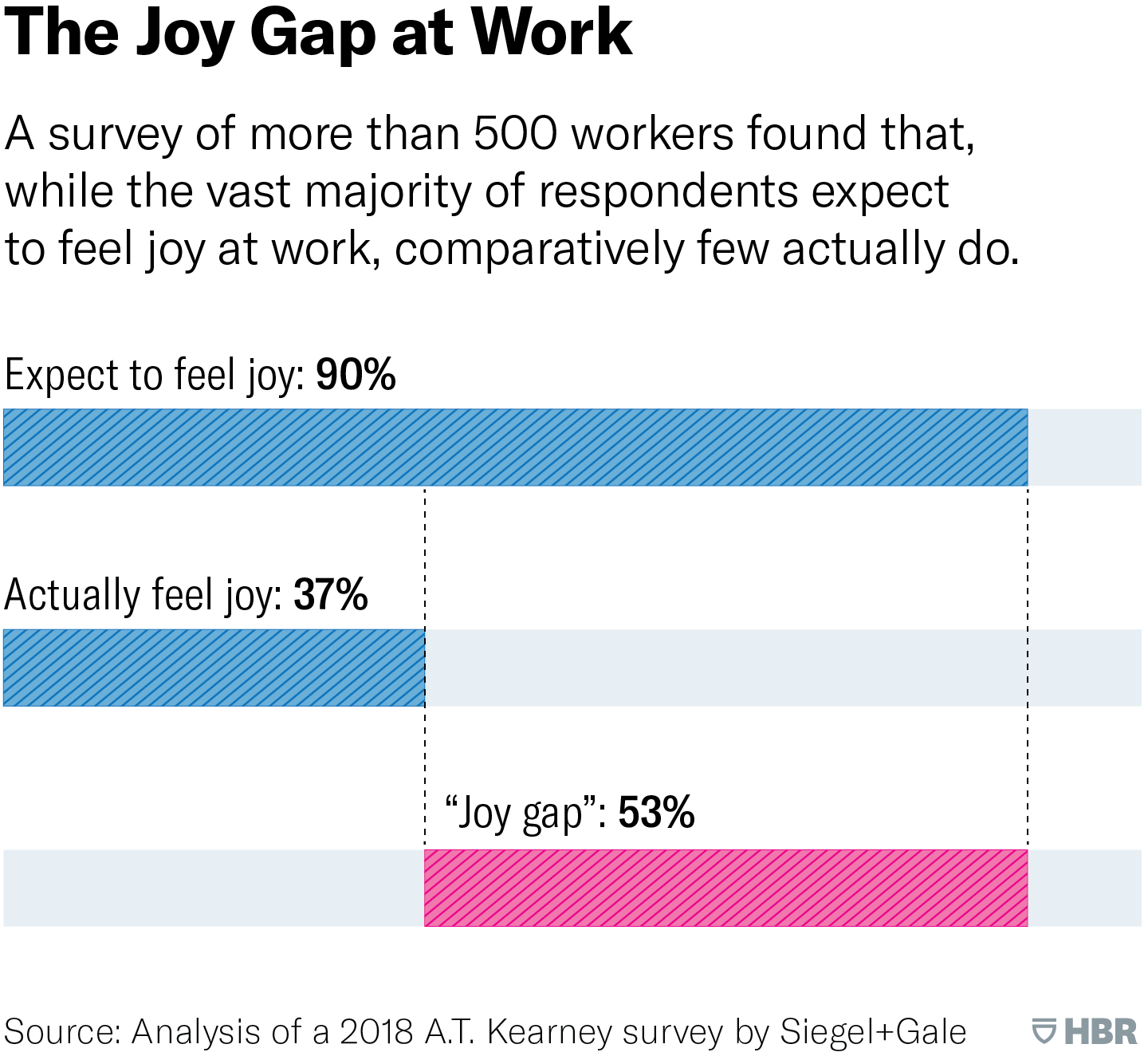Summary. Companies are making massive investments in technologies that can more closely link their people to each other, to customers, and to other stakeholders. Yet many struggles because their cultures get in the way — too many layers and silos, too many colleagues…
Amid the dazzle and hopes of the digital age, it is easy to forget that old-fashioned human desire is as essential to achieving business goals as ever.
Right now, for example, companies are making massive investments in technologies that can more closely link their people to each other, customers, and to other stakeholders. Yet many companies struggle because their cultures get in the way — too many layers and silos, too many colleagues who prefer to stay in their comfort zones, bask in their KPIs and resist new ways of connecting and working.
This is a big problem. And joy can be a big part of the solution. Why? For two reasons. People intrinsically seek joy. And joy connects people more powerfully than almost any other human experience.
The connective power of joy is clearly visible in sports. When a team performs at its awe-inspiring best, overcoming its limitations and challenges, every player — indeed, the entire arena — experiences a brimming ecstasy that lifts the team even further. Success sparks joy. Joy fuels further success. Everyone is caught up in the moment.
YOU AND YOUR TEAM SERIES
Making Work More Meaningful
Can the joy that is so apparent in championship athletics be replicated in business? Absolutely.
In any team environment, joy arises from a combination of harmony, impact, and acknowledgement — all of which business leaders can engender in their organizations.
Harmony. On winning teams, each player has a distinct role in achieving the goal. One player might be a great passer. Another is a great scorer. Yet another may bring a certain intensity and competitive fire. When the diverse skills and strengths of teammates are really clicking together, it feels great.
Impact. Team harmony leads to impact, which further fuels joy. Even if the result is just a single sublime play or golden moment, the palpable joy of each teammate rises. You can see it in their faces as they throw their arms around each other and jump up and down like jubilant children. They are saying to each other: “Can you believe we did that?!”
Acknowledgement. Great coaches instruct their players to, when they score, immediately point to the teammates who created the scoring opportunity. Acknowledging each player’s contributions and cheering for each other powers the entire joy-success-joy cycle.
This is a pattern rife with opportunities for business leaders. By providing people with more of the experiences that engender joy in any team setting, leaders can tap more of the practical power of joy in their companies.
To test this premise, A.T. Kearney conducted a survey in December 2018 that explored people’s workplace experiences across the Americas, Europe, the Middle East, Africa, and the Asia-Pacific region. The sample included more than 500 employees of various ages in companies with more than $2 billion in revenues and in a range of industries.
We first asked respondents to report how much joy they experience in the workplace. We then asked them to rate how well a series of statements reflect their professional experience, so we could gauge whether these variables correlate with feeling joy at work.
As shown in the figure below, employees who reported feeling more joy at work strongly agreed with each statement much more frequently than did employees who said they feel less joy at work. This suggests that the full range of experiences that visibly yield joy in team athletics — namely harmony, impact, and acknowledgement — can have much the same effect in the business world.

Our survey findings further suggest that joy stems from believing one’s work is truly meaningful. Employees who believe their “company makes a positive societal contribution” and who feel “personally committed to achieving the company’s vision and strategy” experienced the most joy at work. In my industry, where almost 100% of newly recruited consultants are Millennials, providing an overarching purpose is critical to attracting and retaining great talent.
These findings make perfect sense to me. Life is a vector requiring both force and direction. The pursuit of happiness sets the direction, but feeling joy provides the daily confirmation that we are doing exactly what we should be doing, for the company and for the teammates who energize our efforts.
The lesson? Crafting business cultures that more consistently engender such experiences can create a much stronger sense of personal interconnection, shared purpose, and heartfelt pride across the organization.
However, the survey also points to a pronounced “joy gap” at work. Nearly 90% of respondents said that they expect to experience a substantial degree of joy at work, yet only 37% report that such is their actual experience. Nor is this joy gap confined to any particular generational cohort. For Gen Xers and Millennials (the vast majority of our sample), the joy gap was 57% and 44%, respectively.

Business leaders tend to think a great deal about success, but rarely about joy. Chances are, few are even aware of the joy gap in their organization and the resulting lack of interpersonal connection and team aspiration. That must change.
Here are some specific steps leaders can take to increase joy at work:
Set the agenda. Make the experience of joy an explicit corporate purpose. Strengthen your inclusion agenda to incorporate meaningful efforts toward ensuring all employees feel heard, recognized, and acknowledged. Fund mental health benefits for all employees.
Set the stage. Staff your new digital/culture programs with true cross-unit, cross-silo teams, where joint teamwork delivers maximum impact, shared success, and fun.
Set the tone. Encourage and celebrate individual and corporate social impact efforts. Authentically express more of the joy you personally experience in your role. Joy begets joy. In my firm, I have emphasized the need to joyfully “dial-up” the culture with a sustained emphasis on diversity, inclusion, apprenticeship, and personal day-to-day leadership.
Joy can pack as much practical punch as technology if we allow it to. Both are required to maintain the cohesion that helps large organizations nimbly communicate and adapt to unprecedented challenges. Technology provides the infrastructure for connectivity, but the foundation must be a culture dedicated to the human experience of harmony, impact, and acknowledgement. In sum, joy.
This article was originally Published Here



One Comment
[…] Making Joy a Priority at WorkSummary. Companies are making massive investments in technologies that can more closely link their pe […]